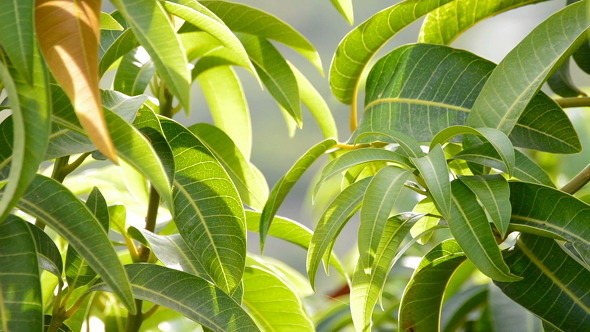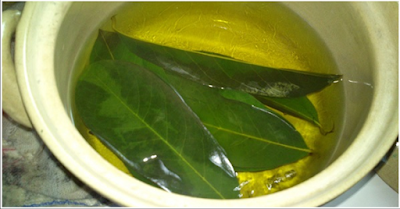Oregano is widely considered as nature’s antibiotic. It is an indispensable spice in Turkish, Greek, Portuguese, Spanish, Latin American and Italian cuisine, oregano is the must-have ingredient in tomato sauces and pairs well with capers and olives. It may be one reason why people who eat a Mediterranean diet tend to live longer and healthier lives. The oil of the wild oregano plant has been shown to kill unwanted bacteria, fungus, yeast, parasites and viruses and is a powerful antihistamine.
Oregano is an important culinary and medicinal herb that has been used in medicine and cooking for thousands of years with a number of health benefits. It is a species of Origanum, belonging to the mint family (Lamiaceae).
It is one of the top five spices in the world with one of the highest ORAC (Oxygen Radical Absorbance Capacity) scores meaning it will more effectively neutralize free radicals.
Oregano typically grows 50 cm tall and has purple leaves around 2 to 3 centimeters in length.
The chemicals that give the herb its unique and pleasant smell are thymol, pinene, limonene, carvacrol, ocimene, and caryophyllene.
Not only does oregano provide food flavor, there are also a substantial number of health claims associated with its potent antioxidants and anti-bacterial properties.
Oregano is a rich source of:
- fiber
- iron
- manganese
- vitamin K – an important vitamin which promotes bone growth and the maintenance of bone density and the production of blood clotting proteins.
The herb is used to treat respiratory tract disorders, gastrointestinal (GI) disorders, menstrual cramps, and urinary tract disorders.
Oregano contains at least four compounds that soothe coughs and 19 chemicals with antibacterial action that may help reduce body odor. The ingredients in oregano that soothe coughs may also help un-knot muscles in the digestive tract, making oregano a digestive aid.
This familiar spice also contains compounds that can lower blood pressure too.
Oregano is also applied topically (onto the skin) to help treat a number of skin conditions, such as acne and dandruff.
WHAT ARE THE HEALTH BENEFITS OF OREGANO
Excellent source of dietary antioxidants – a report published in the Journal of Nutrition revealed that oregano contains very high concentrations of antioxidants (i.e., >75 mmol/100 g).
Oregano contains numerous phytonutrients that have also been shown to function as potent antioxidants that can prevent oxygen-based damage to cell structures throughout the body protecting cells against the effects of free radicals and improving your ability to fight infection.
In laboratory studies, oregano has demonstrated stronger anti-oxidant capacity than either of the two synthetic (and toxic) anti-oxidants commonly added to processed food BHT (butylated hydroxytoluene) and BHA (butylated bydroxyanisole). Additionally, on a per gram fresh weight basis, oregano has demonstrated 42 times more antioxidant activity than apples, 30 times more than potatoes, 12 times more than oranges and 4 times more than blueberries.
Packed with nutrients – oregano is very rich in fiber which is known to reduce high cholesterol levels and lower the risk of colon cancer. In addition, the herb is an excellent source of vitamin E, iron, calcium, omega fatty acids, manganese, and typtophan.
Fiber works in the body to bind to bile salts and cancer-causing toxins in the colon and remove them from the body. This forces the body to break down cholesterol to make more bile salts. These are just some of the reasons that diets high in fiber have been shown to lower high cholesterol levels and reduce the risk of colon cancer.
Antibacterial properties – oregano has shown antimicrobial activity in a number of studies. A group of Portuguese researchers found thatOriganum vulgare essential oils were effective against 41 strains of the food pathogen Listeria monocytogenes.
Oregano oil is a powerful antimicrobial, because of an essential compound called carvacol.
In Mexico, researchers have compared oregano to tinidazol, a commonly used prescription drug to treat infection from the amoeba Giardia lamblia. These researchers found oregano to be more effective against Giardiathan the commonly used prescription drug.
A team of British and Indian researchers reported that the essential oil of Himalayan oregano has strong antibacterial properties that can even kill the hospital superbug MRSA.
Professor Vyv Salisbury, who was part of the research, said
“We have done a few preliminary tests and have found that the essential oil from the oregano kills MRSA at a dilution 1 to 1,000. The tests show that the oil kills MRSA both as a liquid and as a vapor and its antimicrobial activity is not diminished by heating in boiling water.”
Effective against inflammations – scientists at Bonn University, Germany, and the ETH Zurich, Switzerland, identified an active ingredient in oregano – known as beta-caryophyllin (E-BCP) – which may possibly be of use against disorders such as osteoporosis and arteriosclerosis.
Anti-cancer properties – biologists at the United Arab Emirates University reported in the journal PLoS ONE that oregano exhibits anticancer activity by encouraging cell cycle arrest and apoptosis (cancer cells commit suicide) of the MDA-MB-231 breast cancer line.
The scientists concluded “Our findings identify Origanum majorana as a promising chemopreventive and therapeutic candidate that modulate breast cancer growth and metastasis.” Put simply, they believecomponents in oregano may help slow down or prevent the progression of cancer in patients with breast cancer.
Oregano may be effective for the following (although more evidence is necessary):
- Cough
- Asthma
- Acne
- Dandruff
- Bronchitis
- Heartburn
- Bloating
- Headaches
- Heart Conditions
- Allergies
- Intestinal parasites
- Arthritis
- Fatigue
- Repelling insects
- Menstrual cramps
How to Select and Store
Whenever possible, choose fresh oregano over the dried form of the herb since it is superior in flavor. The leaves of fresh oregano should look fresh and be a vibrant green in color, while the stems should be firm. They should be free from darks spots or yellowing.
Even through dried herbs and spices like oregano are widely available in supermarkets, you may want to explore the local spice stores in your area. Oftentimes, these stores feature an expansive selection of dried herbs and spices that are of superior quality and freshness compared to those offered in regular markets. Just like with other dried herbs, when purchasing dried oregano, try to buy that which has been organically grown since this will give you more assurance that it has not been irradiated.
Fresh oregano should be stored in the refrigerator wrapped in a slightly damp paper towel. It may also be frozen, either whole or chopped, in airtight containers. Alternatively, you can freeze the oregano in ice cube trays covered with either water or stock that can be added when preparing soups or stews. Dried oregano should be kept in a tightly sealed glass container in a cool, dark and dry place where it will keep fresh for about six months.




